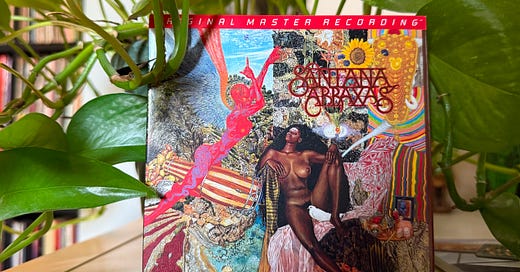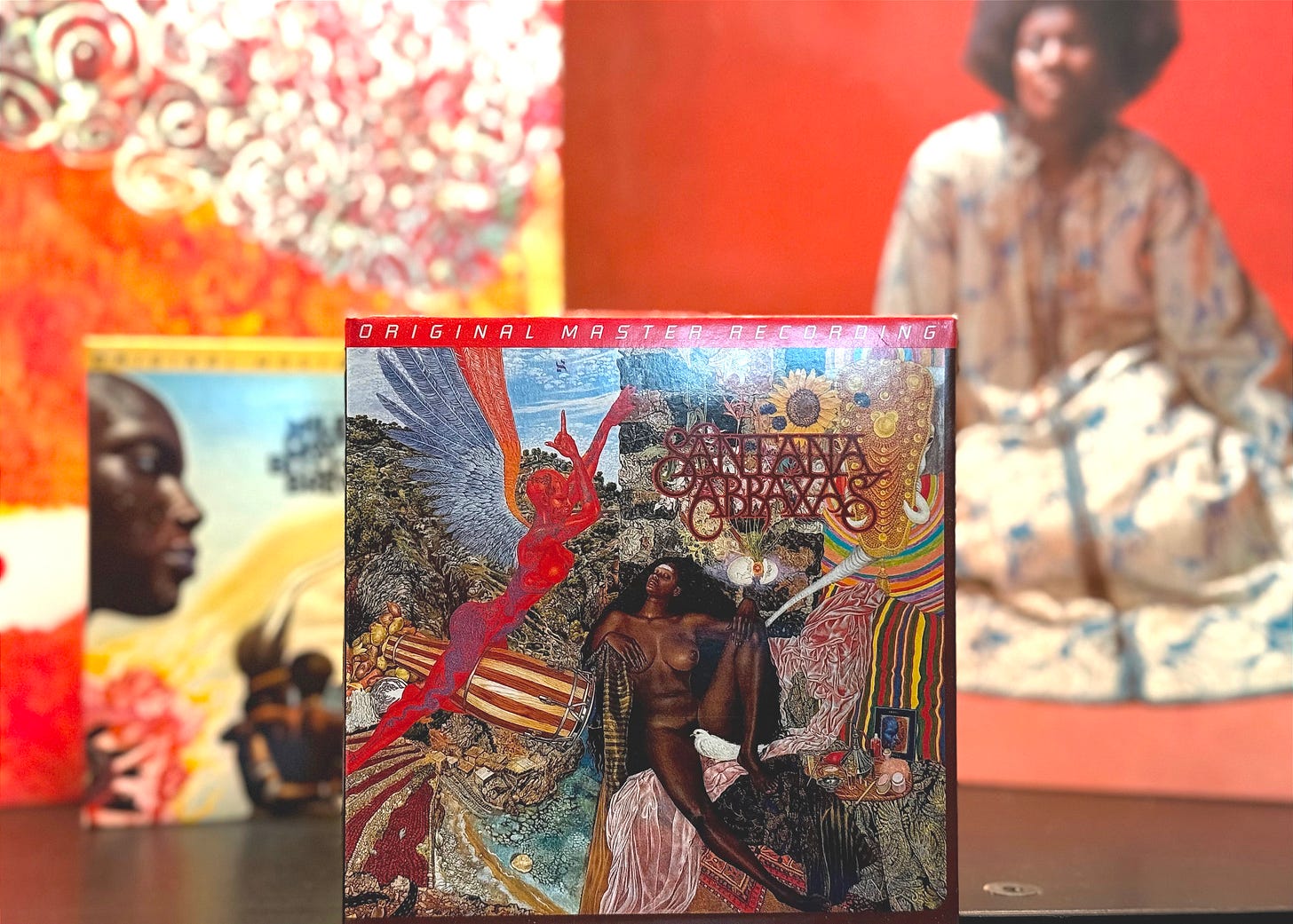Spiritual Fire: Revisiting Abraxas by Santana
A genre-defying album like no other – released in 1970.
Released in 1970, Santana’s Abraxas didn’t just follow up the band’s self-titled debut—it elevated their genre-blending identity into something bolder, richer, and more spiritually tuned. A little over a year since their Woodstock performance, where Carlos Santana tripped through his set, Abraxas finds Carlos and his bandmates channeling Latin rhythm, psychedelic rock, jazz, blues, and Afro-Cuban textures that fifty-three years later still feels contemporary and alive.
The title Abraxas comes from a passage in Hermann Hesse’s Demian—a nod to a mystical figure representing the balance of good and evil. That spiritual curiosity runs through the entire record, not just in sound but also in space. Like the novel, this album also explores themes of duality and spirituality.
The opening track, “Singing Winds, Crying Beasts,” sets the tone with ambient percussion and chimes melded with piano, Carlos’ signature guitar, and a subtle bluesy organ. It’s a meditative entryway before the record explodes into “Black Magic Woman / Gypsy Queen.” It’s a cover of Fleetwood Mac’s Peter Green, but Santana’s version reimagines it entirely with Latin percussion and is punctuated by Carlos’s clean guitar work. The segue into Gábor Szabó’s “Gypsy Queen” is seamless. For me, other than Santana’s guitar, the bass work by David Brown and the percussion of Michael Carabello are what highlight this album.
Abraxas is packed with tracks that show the band at its best. “Oye Como Va,” a Tito Puente composition, is arguably the album’s most iconic moment—a track that helped bridge Latin music and mainstream FM radio without diluting either. The groove is hypnotic, the organ solo is like nothing else, and Santana’s guitar never shouts—it just sings and lets the percussion accompany him throughout his solo.
On the jazzier side, “Incident at Neshabur” builds with modal ambition and dynamic shifts reminiscent of Miles Davis’s electric period of the same era. It flows—the band moves in real-time, trading leads without ever losing cohesion. It is very jazz-oriented. I love it when the piano enters around the 4-minute mark; it’s such a great sound…
The percussion (Michael Carabello, José “Chepito” Areas) and drummer Michael Shrieve work so well together. This rhythmic density makes Abraxas such a rich headphone listen, especially on vinyl, where the analog warmth brings out the depth in every conga slap and cymbal hit. Give it a try. Purchase the vinyl here.
One of my favorite tracks is “Se a Cabo,” which showcases the band’s ability to blur the lines between structure and a jam session. The percussion is wild, and the bass and lead guitars hum together over the organ. It’s just a beautiful sound that you never want to end.
Fifty-three years later, Abraxas stands up not just as a product of its time but as a vision—it captures the energy of a rock 'n' roll band that embraced fusion before it was even a buzzword, celebrating cultural roots without compromise and treating the studio as a space for experimentation. It delivers a spiritual experience—whether you’re a longtime listener or hearing it for the first time, it still hits with a force. I couldn’t tell you my top 50 albums of all time, but I know that this album is one of them.
Are you looking for more music based on spiritual energy, like Abraxas? Try listening to Thembi by Pharoah Sanders or Journey to Satchidananda by Alice Coltrane. Both explore jazz's cosmic, spiritual, and percussive side with an Eastern influence. They are both meditative and mesmerizing albums… and if you’re looking for the experimental side of Abraxas, try Tago Mago by Can, a German classic.
Lastly, if Abraxas is already in your rotation, then cue up Bitches Brew by Miles Davis. Both albums were released in 1970—jazz, rock, mysticism, and improvisation—in different languages, with the same spiritual pursuit.
Until next time. Thanks for reading.








Carlos said in his autobiography that ‘Abraxas’ captures the sound he had in mind for Santana.